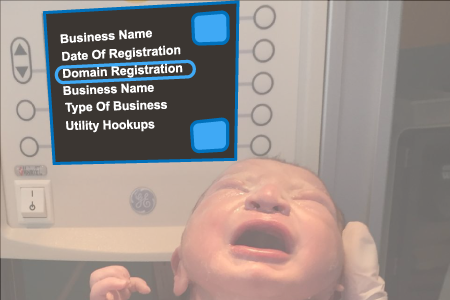The race to reach the newest businesses is a big deal for direct marketers. The challenge is to get there first, before the competition. It makes sense to contact these freshly hatched enterprises ASAP.
The Newest Businesses Need Everything
Remember what it takes to start a business. Once a business plan is in place, the process of becoming a “going concern” involves the following (after each is sample of the resources and businesses that may want to reach out to startups at that stage):
Formation costs – This depends on the type of business. Legal considerations and expenses for starting an LLC, a partnership, or a corporation differ. At this point things like the business location, name (DBA), and tax status are set. Legal and tax advice (ongoing) is needed. (Business Mentors, Law Firms, Accounting Firms)
Licenses and permits – Municipalities, states and the federal government each have their requirements that must be met in order to organize a business and begin operations. (Business consultants, Local and State Authorities, U.S. Small Business Administration)
Infrastructure/ Real estate – Every startup needs a home. It may literally be a home business or require the rental of office, manufacturing, or warehouse space. Perhaps a facility needs to be built, requiring planning, financing and building. (Architects, Interior Designers, Real Estate Agents, Commercial Lenders, Contractors/Builders)
Insurance – Insurance spans coverage for business practices, disaster, liability and human resources. Some is mandated while some is prudent. (Insurance Agencies)
Funding – A banking relationship is necessary to cover the (hoped for) costs of growth and a cushion for unexpected difficulties. This may mean incurring debt to finance infrastructure. Having a reliable funding partner is a key backstop for a new business. (Traditional and Non-Traditional Commercial Lenders)
Workforce Expenses – If the business requires employees, compensation is required to attract and keep them. Salaried versus contract arrangements may be appropriate. Equity positions may be offered. (Payroll Services, Benefits Providers, HR Consultants)
Equipment and Supplies – Depending on what the business does, investment in manufacturing equipment, technology hardware, communications infrastructure and on down to must be made. (Equipment Leasing, Telecom, IT Hardware/Software, Office Supply)
Research – The entire enterprise is at risk marketplace intelligence regarding the viability of the product or service that is to be offered, the competitive landscape, plus the needs and mindset of intended customers. (Market/Audience Research, Polling Services)
Advertising and promotion – The newest businesses must announce their existence to their intended customers. Brand identity needs to be established. A website must be built. Promotions in the form of introductory discounts, events, or elaborate materials are offered. Media costs are incurred. Marketing and advertising firms are retained. (Marketing, Advertising, Promotion, Media, Web Development Services)
Each of these triggers pointing to new business creation represents direct marketing opportunities. There are quite a few “new businesses” mailing list resources to consider. They are most often compiled from public databases. They may include alternative resources (also public) that are indicators of interest and activity.
One of the ways they differ is in the definition of “new”. For example, Business Employment Dynamics data from the U.S. Bureau of Labor Statistics measures job growth as a function of business births and deaths, which are compiled on a quarterly basis. That suggests reliance on the data imposes a backward time horizon of at least 90 days from actual inception.
This is not to minimize the value of BLS data. It is a huge and ongoing task to compile and digest the statistics and then present them to users in academia, government and business in actionable form. Data on young, growing companies provided by Dun & Bradstreet is extremely valuable.
To peer back further in time to within days business creation – and even before – touches on predictive analysis. For a business to hit the ground running, many things have to happen before the doors open. The blue-sky planning stage may yield clues as to a budding entrepreneur’s intentions in the form of inquiries and outreach. A website domain must be registered and a site built. Some sort of space is needed requiring leasing, renovating, buying, building.
Obtaining data that provide these cues of startup activity can translate into a marketing advantage. Combined with traditional sources of rigorously compiled and presented public record data, direct marketers can win that race to reach the newest of the new businesses.




